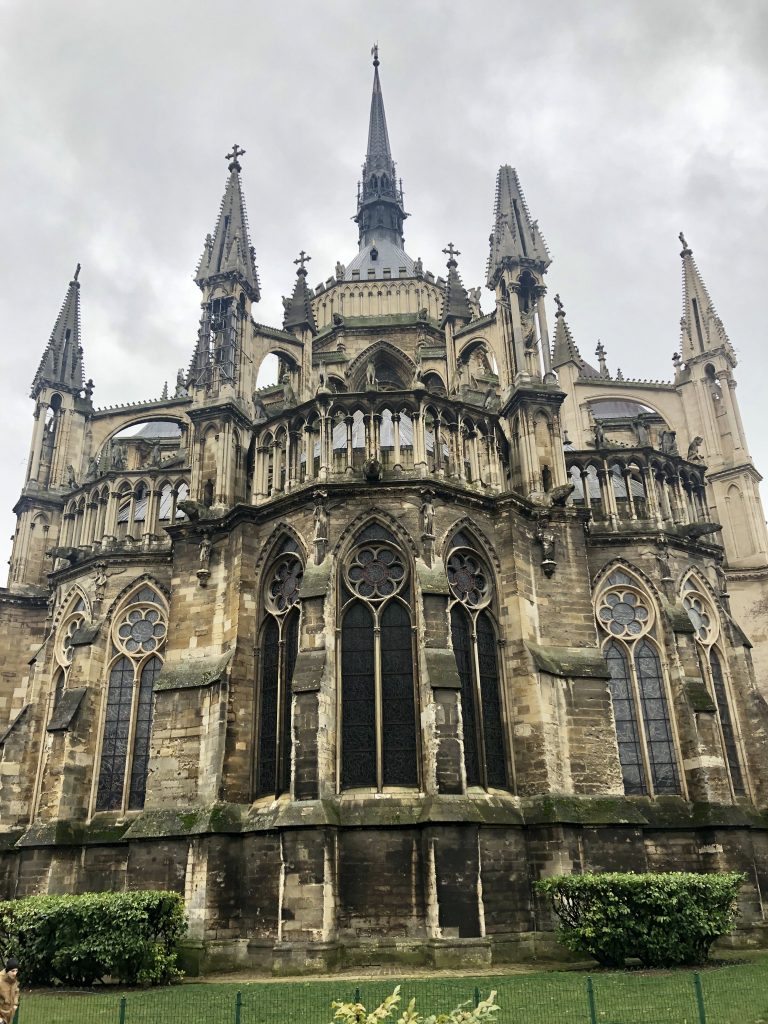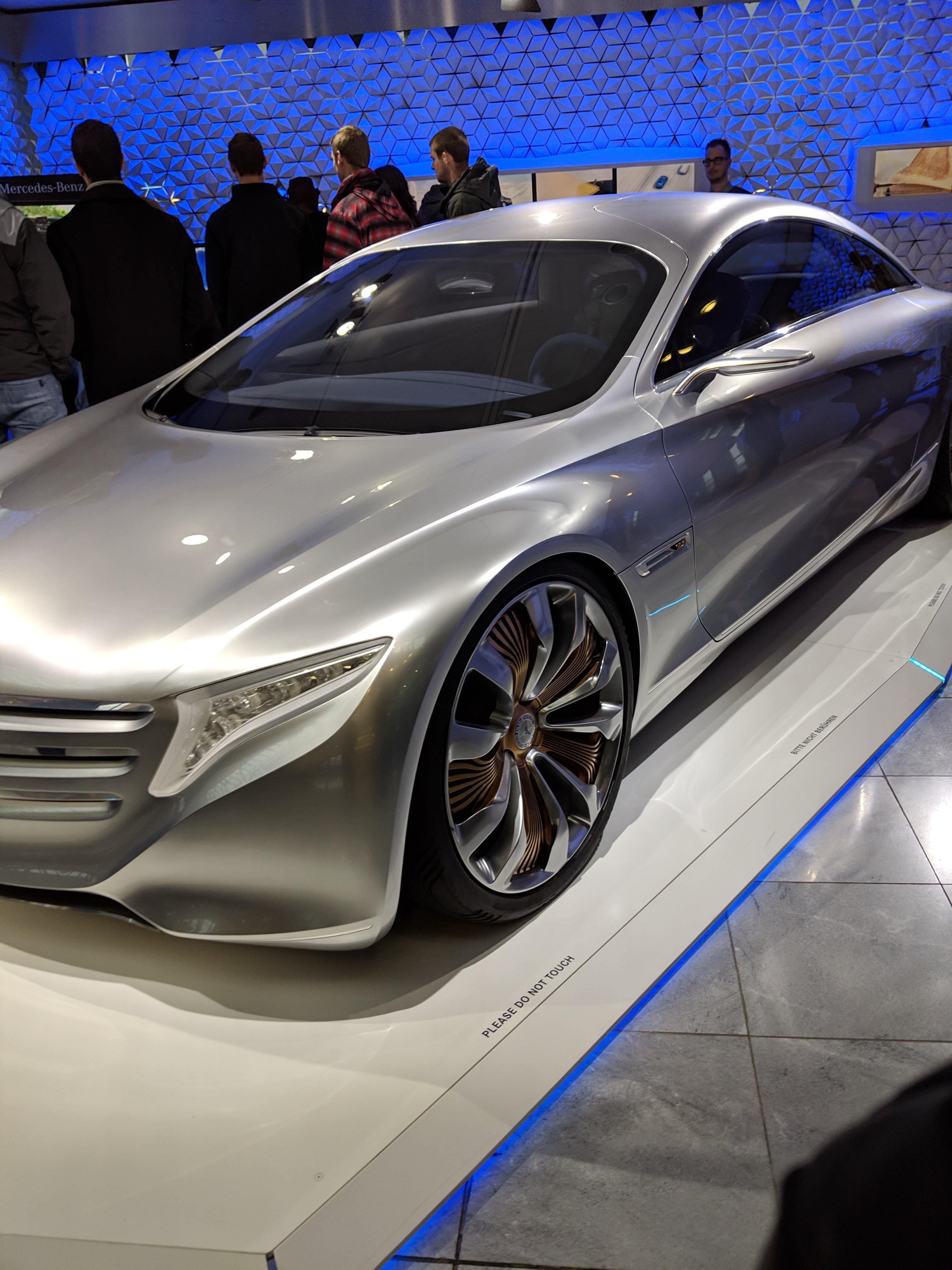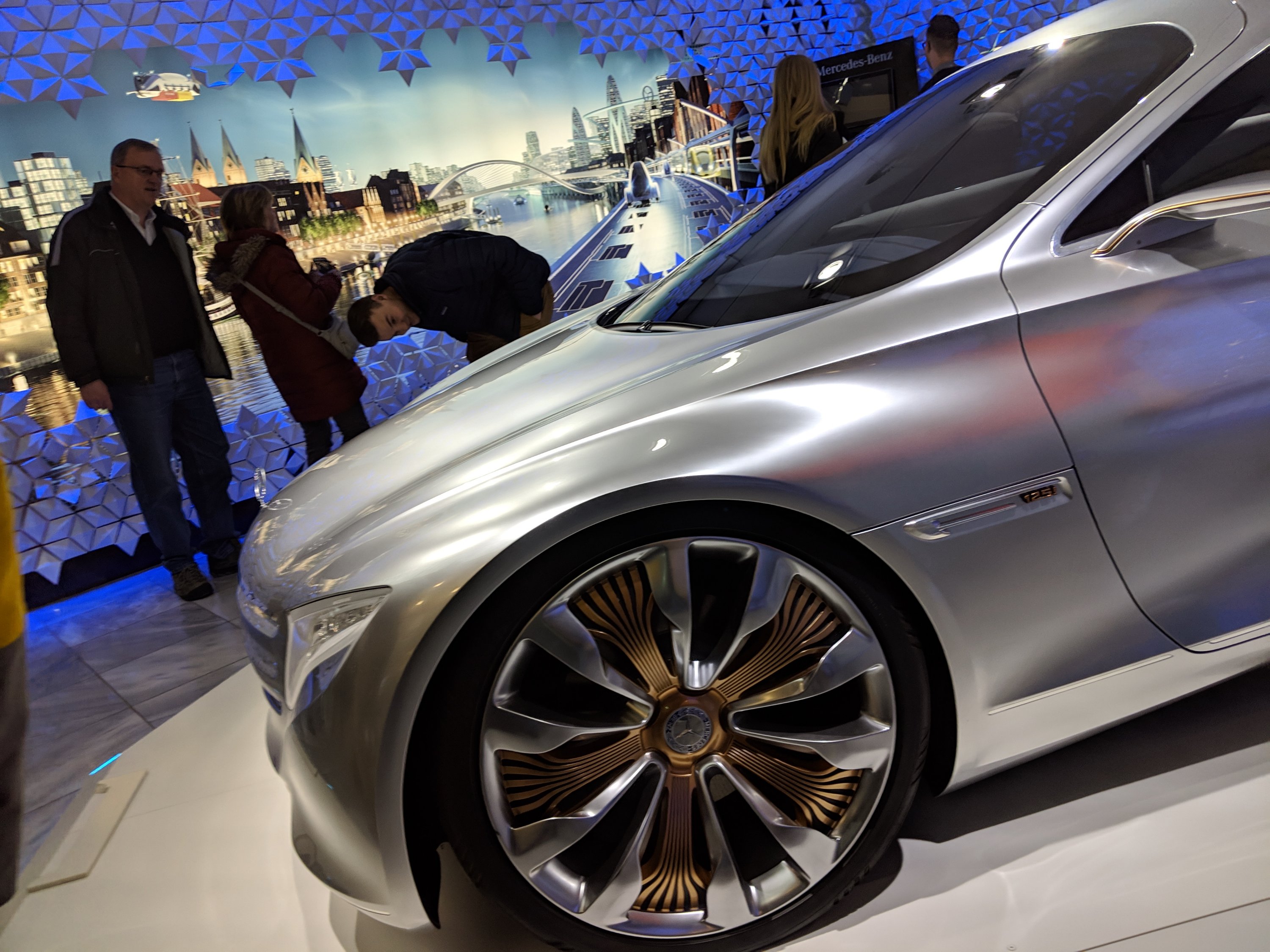I seriously thought our tour of the Mercedes Benz plant was awesome! It was so cool to see how the cars were made step by step. We started in their customer area where people buy cars and sellers make deals. It was beautiful, filled with fancy cars and nice furniture (hoping I’ll buy a car there some day ahahha). I thought that was a very good selling technique because the luxury of the building makes you feel like you are really important and doing big things. We watched a short video about the company and the way they make the cars, and then we headed to the plant where they engineer the bodies of the cars. I did not realize that it was all done by machine, and it was incredible to see the robots working at such fast speeds to assemble the metal parts. There were also a lot of interesting safety precautions to prevent anyone from getting injured around the high tech robots. We even had to wear safety goggles throughout the entire factory.
From there we moved on to the actual assembly line. We walked on a catwalk above everything taking place, and it was so amazing. I loved seeing the workers putting things like windshields into the colorful cars. There were so many different models and colors being assembled. It was crazy to watch how everything worked so smoothly and to imagine someone driving the cars that were sitting unfinished in front of us. The tour was super informative and interesting, probably one of my favorite business tours we have been on.
The factory was well-run, safe, and great at advertising. We were not allowed to take any pictures, but it was an awesome tour and made me think of Mercedes in a whole new light.
AWESOME TOUR 10/10



